Cranfield Seed Fund recipient, Cosysense, are using AI to solve air conditioning problems and provide a net zero alternative
21/03/2025

If you’ve ever worked in an office environment you’ve probably been involved in, or overheard, a conversation about the air conditioning. Well, it’s no surprise it’s a common complaint when research shows that up to 80% of occupants face discomfort from air conditioning systems in communal areas, such as offices.
Cranfield Seed Fund recipient, Cosysense, is creating a solution to stop arguments over hot or cold spaces using plug-and-play sensors to collect data on user comfort and the indoor environment, and complement it with outdoor weather. With this data, each building heating, cooling and ventilation systems (HVAC) become autonomous. Their AI uses it to adjust settings in real-time to provide the most comfortable and healthy settings for each space with a lower electricity cost and greenhouse gas emissions.
At Cranfield we pride ourselves on our commitment to sustainability and entrepreneurship. This is why we created the Cranfield Seed Fund, a philanthropic investment fund that provides early-stage capital to promising cleantech businesses. The founders of Cosysense, Matias Acosta and Sebastian Horstmann, were selected for the funds at an early-stage, which has accelerated their business development. Besides providing financial support, Cranfield introduced the founders to thematic experts, helping them refine their solution and strategy.
Co-founder, Matias Acosta, also states:
“The Seed Fund played a pivotal role in the early growth of Cosysense, becoming one of our first investors and establishing a foundation of trust and credibility around our business. This initial support not only provided crucial financial resources but also served as a vote of confidence in our vision and technology. The backing from such a respected entity, at the same time that Cambridge University invested in us too, helped us to unlock further private equity investment.”
Since the initial investments from the Cranfield Seed Fund and Cambridge University, Cosysense have continued to secure funding to accelerate their growth, as well as cementing their name within the sustainable sector, being recognised as one of the top sustainability solutions by ASME, Daikin, and the Mayor of London Better Futures Award.
So, what does the future hold for Cosysense? They’re currently busy finalising their hardware and software upgrades, ensuring that their solution is ready to hit the market in 2025. This year is sure to be a significant milestone in their commercialisation journey, and we’re excited to see Cosysense continue to scale their operations, expand their market reach and accelerate their mission of transforming 1 million commercial buildings into more profitable, sustainable, and comfortable spaces.
Categories & Tags:
Leave a comment on this post:
You might also like…
Make Google Scholar work even harder for you!
Google Scholar can be a great place to start your search on a topic as it is easy to use and searches a huge range of sources. However, it does not search everything, and it ...
Executive Insights: Studying Logistics and Supply Chain While Leading a Business
Q&A with Rory Comerford, Managing Director, Capcon Limited “I chose to study the part-time Executive Logistics and Supply Chain Management MSc at Cranfield to advance my career and gain a deeper understanding of this ...
Too much to do? Can’t get your thoughts down on paper?
Our Study Skills Hub has two sections that may be able to help you! In Time Management we have some great tips on how to manage your time, to prioritise, and de-stress. First of all, ...
How do I cite… quotations from video content in the APA7 style
When you quote from another source in your writing, you would traditionally include a page number in your in-text citation. But what do you do when there are no pages? How would you cite a ...
Using what you read in what you write – Summarising, paraphrasing and quoting other authors
University life involves a serious amount of reading and writing. We study the work of other people to inform ourselves about a topic. When we then re-use that knowledge to create our own work, we ...
Referencing in APA7: Using shortened URLs
As you may be aware, when you are referencing a website or any internet-based source you need to include the source URL. For most conventional reference lists, it is fine to include the URL or ...







